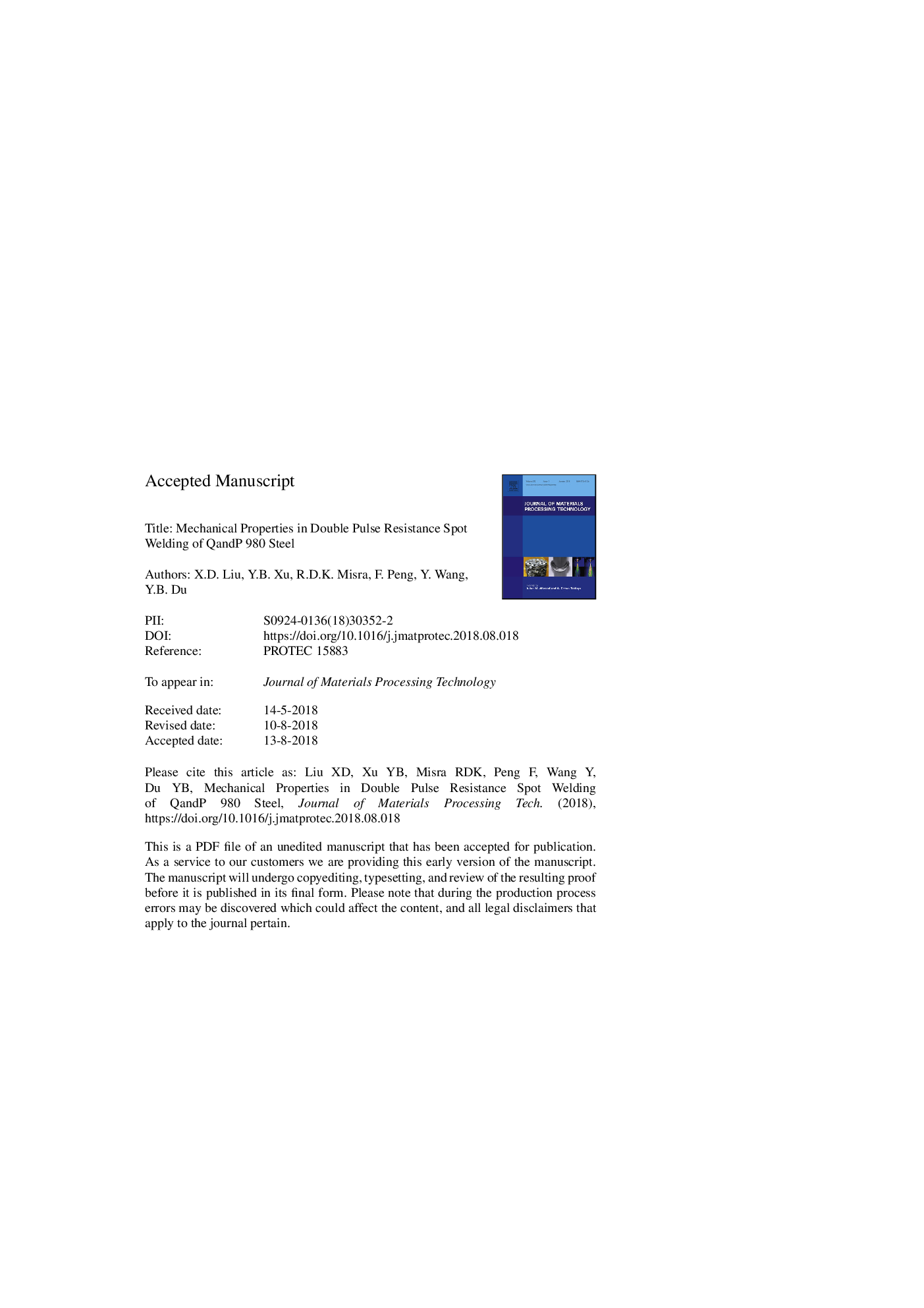| Article ID | Journal | Published Year | Pages | File Type |
|---|---|---|---|---|
| 11004015 | Journal of Materials Processing Technology | 2019 | 51 Pages |
Abstract
The weldment consisted of four zones: fusion zone, partially melted zone, heat affected zone and base metal. Liquation film, liquated grain boundaries, liquation crack and softening zone were observed in the partially melted zone. Compared to single pulse resistance spot welding (RSW), the double pulse welding with a higher secondary current led to an enhancement in tensile-shear strength and a desirable failure mode, while a medium level value improved cross-tensile strength and ductility ratio. The partially melted zone acted as a crack sensitive area due to P segregation, causing a distinct partial thickness-partial pullout failure in the tensile-shear tests and pullout interfacial failure in the cross-tensile tests. Liquation crack, referred as a secondary crack initiation, further promoted crack propagation in these failures. The partial thickness-partial pullout failure can be divided into three stages: crack initiation, crack propagation and instantaneous fracture. The fracture mechanism were quasi-cleavage fracture during crack propagation. Then, the instantaneous fracture is occurred with ductile characteristic.
Related Topics
Physical Sciences and Engineering
Engineering
Industrial and Manufacturing Engineering
Authors
X.D. Liu, Y.B. Xu, R.D.K. Misra, F. Peng, Y. Wang, Y.B. Du,
